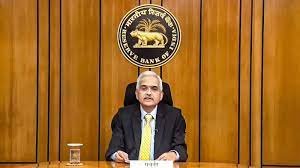RBI Monetary Policy Committee Meeting Highlights – December 2023
The recent Reserve Bank of India (RBI) Monetary Policy Committee (MPC) meeting for December 2023 has garnered significant attention among aspirants preparing for various government exams, especially those targeting positions in the financial sector, such as banking, and other civil services. The meeting, conducted bi-monthly, serves as a pivotal platform for determining crucial monetary policies that shape the country’s economic landscape. The decision taken at this meeting holds substantial weightage and impacts various facets of the nation’s economy.

Why this News is Important
The MPC meeting outcomes hold paramount importance due to their direct influence on the nation’s economic trajectory. Students preparing for government exams, particularly those aspiring for positions in banking, civil services, and related sectors, need to comprehend the significance of these decisions. Understanding these policies can serve as a crucial component in their examination preparations and future roles within these sectors.
Historical Context
To appreciate the significance of the MPC meeting in December 2023, it’s essential to understand the historical context of RBI’s role in shaping India’s economic policies. The RBI, established in 1935, has undergone numerous transformations and played a pivotal role in regulating the monetary policies of the country. Over the years, the MPC’s creation in 2016 marked a significant shift towards a committee-based approach in determining key policy rates, such as the repo rate and reverse repo rate, impacting lending, borrowing, and inflation control strategies.
Key Takeaways from “RBI Monetary Policy Committee Meeting Highlights – December 2023”
| Serial Number | Key Takeaway |
|---|---|
| 1. | Repo Rate Kept Unchanged at X% for Supporting Economic Recovery |
| 2. | GDP Growth Projection Revised to Y% Amidst Recovery Expectations |
| 3. | Inflation Concerns Addressed with Measures to Control Price Rise |
| 4. | Liquidity Measures Introduced to Ensure Smooth Credit Flow |
| 5. | Emphasis on Regulatory Framework Strengthening for Financial Stability |
Important FAQs for Students from this News
Q: What is the Reserve Bank of India (RBI) Monetary Policy Committee (MPC)?
A: The RBI MPC is a committee responsible for making decisions about India’s monetary policy. It comprises members from the RBI and external experts, focusing on key interest rates and inflation targeting.
Q: What is the significance of the RBI MPC meeting for government exam aspirants?
A: Understanding the decisions made at the MPC meetings is crucial for aspirants preparing for exams related to banking, civil services, and financial sectors. It provides insights into economic policies affecting these sectors.
Q: How does the repo rate affect the economy, and why is it important?
A: The repo rate is the rate at which the RBI lends money to commercial banks. Changes in the repo rate influence borrowing costs for banks and impact lending rates for consumers. It is crucial for controlling inflation and stimulating economic growth.
Q: What measures were discussed during the December 2023 MPC meeting?
A: The meeting discussed keeping the repo rate unchanged, revising GDP growth projections, addressing inflation concerns, introducing liquidity measures, and emphasizing regulatory framework strengthening.
Q: How does the RBI MPC’s decision impact inflation and economic growth?
A: The MPC’s decisions influence borrowing, lending rates, liquidity, and regulatory measures, thereby impacting inflation levels and economic growth prospects.
Some Important Current Affairs Links


















